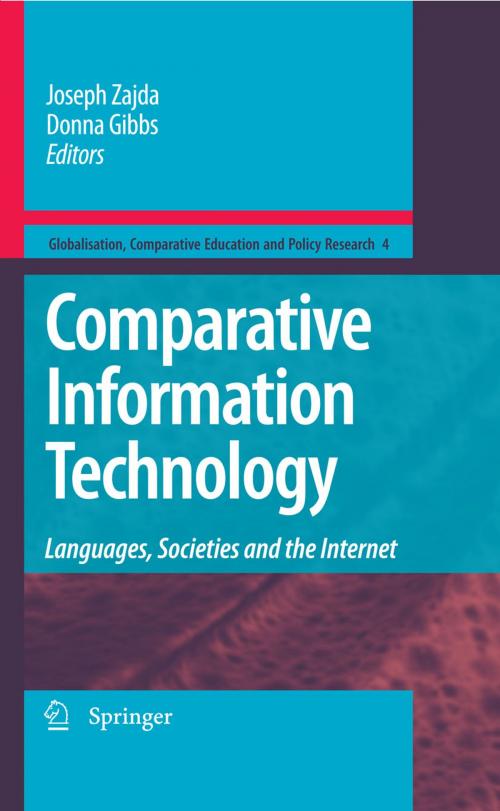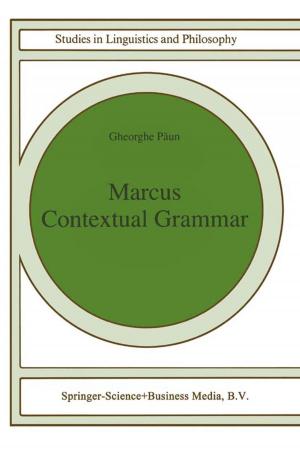Comparative Information Technology
Languages, Societies and the Internet
Nonfiction, Reference & Language, Education & Teaching, Teaching, Computers & Technology| Author: | ISBN: | 9781402094262 | |
| Publisher: | Springer Netherlands | Publication: | April 21, 2009 |
| Imprint: | Springer | Language: | English |
| Author: | |
| ISBN: | 9781402094262 |
| Publisher: | Springer Netherlands |
| Publication: | April 21, 2009 |
| Imprint: | Springer |
| Language: | English |
Comparative Information Technology: Languages, Societies and the Internet, which is the fourth volume in the 12-volume series Globalisation, Comparative Education and Policy Research, offers a critique of the nexus between ICT and its impact on society, individuals and educational institutions. One of the most signification dimensions of globalisation has been the rapid development of information and communications technologies (ICTs). Our lives have been changed by this in numerous ways and the implications for education are en- mous. The ICTs have transformed the linguistic, cognitive and visual dim- sions of human communication, as well as our perceptions of the self, and social identity in the global culture. The ICTs have facilitated the development of new dimensions of digital literacy, such as blogging and sms messaging. In this sense, cyberlanguage continues to evolve by borrowing and adapting familiar words, coining new expressions, and embracing particular styles (Gibbs & Krause, 2006, 2007). However, information technology can be both empowering and disempowering. Individuals use the Internet, notebooks, and their BlackBerries and communicate via email. If clothing is an extension of one’s skin, then the ICT has become an extension of our bodies. In a globalised world, linked through the Internet, a n- formed identity can lead to a multiplicity of identities, some contradictory to each other, and some taking place primarily in the virtual communities of cyberspace.
Comparative Information Technology: Languages, Societies and the Internet, which is the fourth volume in the 12-volume series Globalisation, Comparative Education and Policy Research, offers a critique of the nexus between ICT and its impact on society, individuals and educational institutions. One of the most signification dimensions of globalisation has been the rapid development of information and communications technologies (ICTs). Our lives have been changed by this in numerous ways and the implications for education are en- mous. The ICTs have transformed the linguistic, cognitive and visual dim- sions of human communication, as well as our perceptions of the self, and social identity in the global culture. The ICTs have facilitated the development of new dimensions of digital literacy, such as blogging and sms messaging. In this sense, cyberlanguage continues to evolve by borrowing and adapting familiar words, coining new expressions, and embracing particular styles (Gibbs & Krause, 2006, 2007). However, information technology can be both empowering and disempowering. Individuals use the Internet, notebooks, and their BlackBerries and communicate via email. If clothing is an extension of one’s skin, then the ICT has become an extension of our bodies. In a globalised world, linked through the Internet, a n- formed identity can lead to a multiplicity of identities, some contradictory to each other, and some taking place primarily in the virtual communities of cyberspace.















